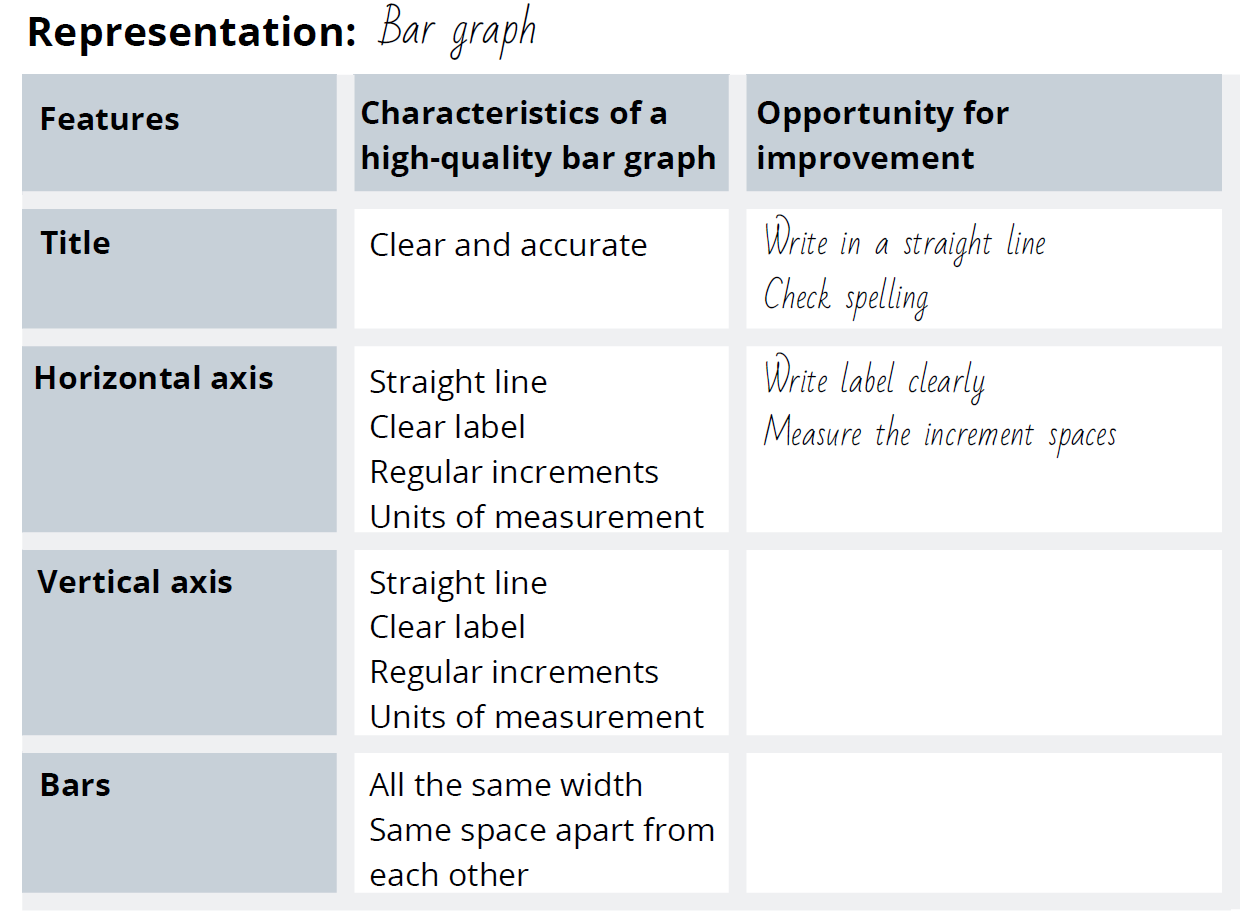A quality matrix is a tool that can be used for formative feedback and supports the development of high-quality science literacy representations including graphs, tables, or labelled drawings. It can be used by teachers and as student self and peer assessment.
Research shows clarity and feedback mechanisms have a significant impact on student learning (Hattie, 2023). Feedback supports students to identify what progress looks like, and what they can try next. Using formative feedback, students and teachers can progress to close gaps between current and desired learning.
A quality matrix can be created by the teacher or co-created with students to engage them in a discussion of what constitutes a high-quality representation. It identifies learning expectations, documents student achievement and provides a scaffold to provide feedback specific to the task.
Supporting learning
A quality matrix may be adjusted to suit individual student needs. For example, in a labelled diagram, scale may be shown using photographs of familiar objects or graduated to more formal measurement, and scaffold literacy by providing labels as appropriate.

In practice
- Consider completing the first and second columns as a whole class to come to an agreement about the features of a high-quality representation.
- Differentiate by supporting small groups of students or individual students an opportunity to complete a quality matrix that is targeted at their learning needs.
- Complete the third column with individual students during formative assessment conversations, or use it to record observations of student’s work.

Discuss with your colleagues
- What activities could you use this approach with your students?
- What support would you need to trial this in your classroom?
- Is there an age or stage that this approach would/should not be used? Justify your reasoning.
References
Hattie, J. (2023). Visible learning: The sequel: A synthesis of over 2,100 meta-analyses relating to achievement. Routledge.
Feedback. (2017). AITSL. Retrieved June 18, 2024, from https://www.aitsl.edu.au/teach/improve-practice/feedback#tab-panel-4
